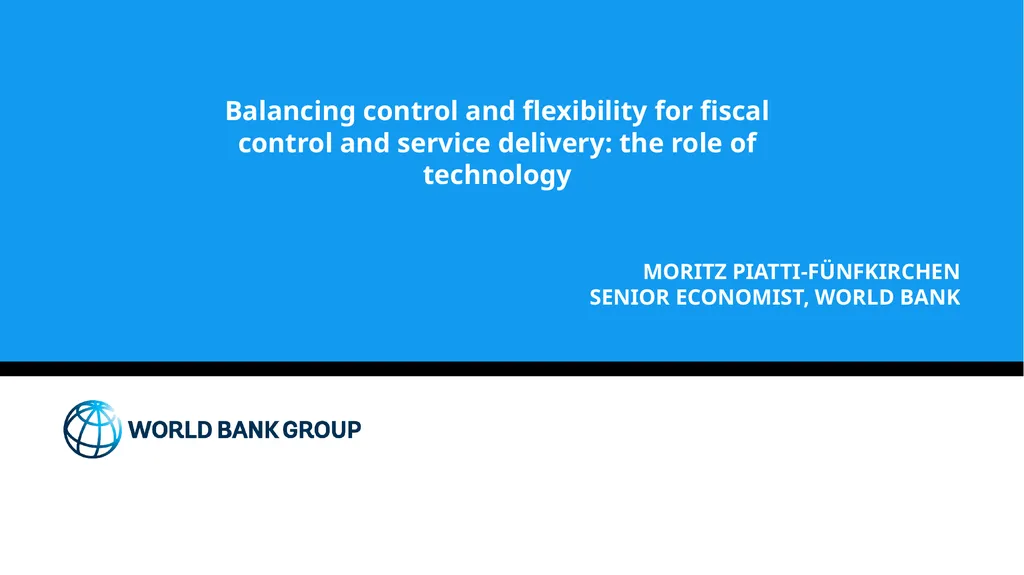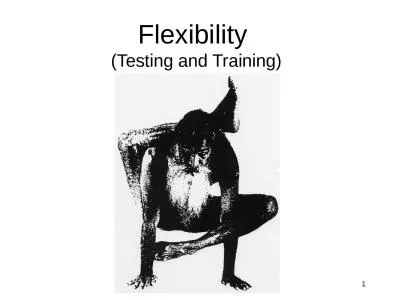Balancing control and flexibility for fiscal
Author : tawny-fly | Published Date : 2025-06-23
Description: Balancing control and flexibility for fiscal control and service delivery the role of technology Moritz PiattiFünfkirchen Senior Economist World Bank A Stacked Layer Model Approach to PFM Digitization Where does technology come in where
Presentation Embed Code
Download Presentation
Download
Presentation The PPT/PDF document
"Balancing control and flexibility for fiscal" is the property of its rightful owner.
Permission is granted to download and print the materials on this website for personal, non-commercial use only,
and to display it on your personal computer provided you do not modify the materials and that you retain all
copyright notices contained in the materials. By downloading content from our website, you accept the terms of
this agreement.
Transcript:Balancing control and flexibility for fiscal:
Balancing control and flexibility for fiscal control and service delivery: the role of technology Moritz Piatti-Fünfkirchen Senior Economist, World Bank A Stacked Layer Model Approach to PFM Digitization Where does technology come in? where not? Why does it matter? How can it affect expenditure control and service delivery? Source: IMF. 2020. Stacked Layer Approach to PFM Digitization FMIS for Expenditure Control Requires Utilization What is the marginal impact of FMIS investments? How does it support expenditure control? How does it support service delivery? Take a data driven approach to assess FMIS effectiveness Leverage technology for decision making FMIS utilization and deviation from planned deficit Source: Piatti-Fünfkirchen et al (2017). Hashim et al (2020). Take a Risk-Based Approach to Expenditure Management Source: Hashim, A., et al. 2019. The Use of Data Analytics Techniques to Assess the Functioning of a Government's Financial Management Information System: An Application to Pakistan and Cambodia. Take Advantage of Maturing Technologies to Foster Efficiency, Reach and Accountability in Service Delivery Blockchain for verification of services What services were delivered? What outputs achieved? Who received services? Confidence in data providence Inform budget allocation decisions Use of mobile money to initiate payment Facilitate G2G transfers to remote providers Digitization of transactions Improved cash management Improved facility autonomy Efficiency and accountability Examples from the health sector Source: World Bank. 2019. Balancing control and flexibility: using banking sector innovations for improved expenditure control and effective service delivery. References Hashim, A., et al. 2019. The Use of Data Analytics Techniques to Assess the Functioning of a Government's Financial Management Information System: An Application to Pakistan and Cambodia. World Bank Policy Research Working Paper; No. WPS 8689. Washington, D.C.: World Bank Group. Hashim, A. and M. Piatti-Fünfkirchen. 2018. Lessons From Reforming Financial Management Information Systems: A Review of the Evidence. World Bank Policy Research Working Paper; No. WPS 8312. Washington, D.C.: World Bank Group. Hashim, A. and M. Piatti-Fünfkirchen. 2016. A Diagnostic Framework to Assess the Capacity of a Government's Financial Management Information System as a Budget Management Tool. IEG Working Paper Piatti-Fünfkirchen, M. and A. Hashim. 2020. A Stacked Layer Approach to PFM Digitization. International Monetary Fund Piatti-Fünfkirchen M. et al. 2019. Balancing control and flexibility in public expenditure management: using banking sector innovations for improved expenditure control and effective service delivery. Policy Research Working Paper; No. 9029. World Bank, Washington, DC. © World Bank. Piatti-Fünfkirchen, M. and A. Hashim.














